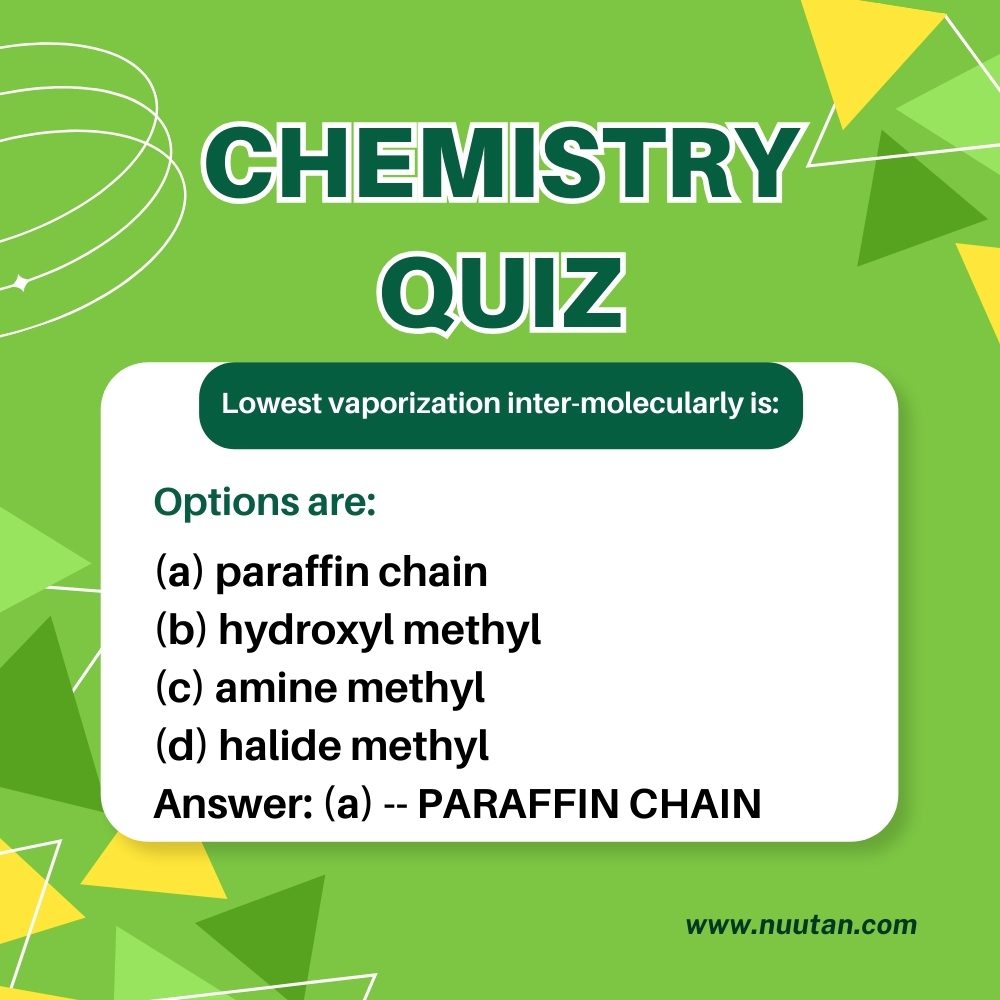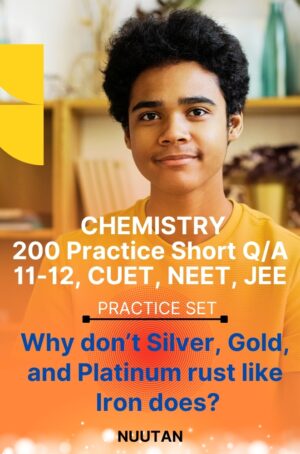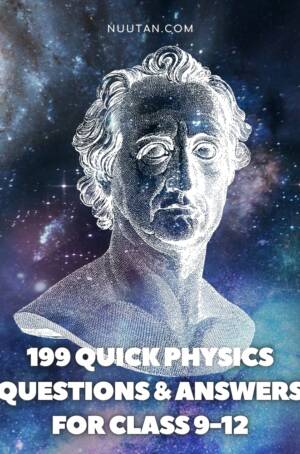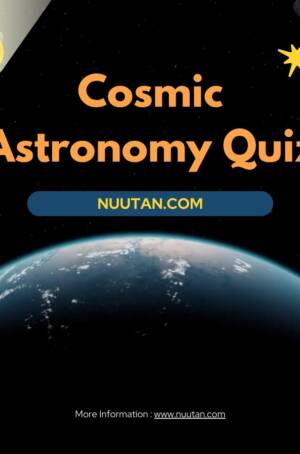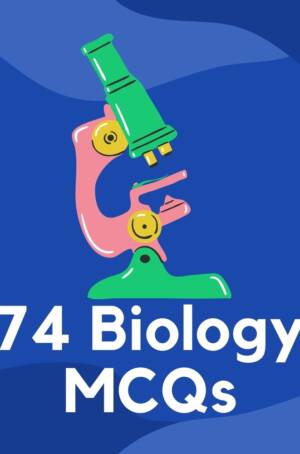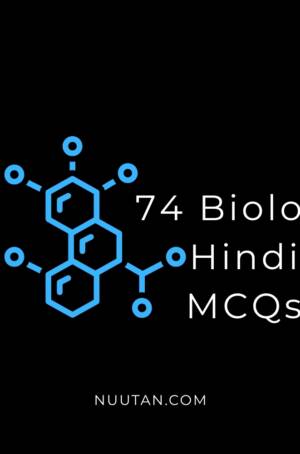Description
Chemistry Quiz:
Q1: Amidst the listed luminaries in the annals of scientific exploration, who earned the Nobel Prize in Chemistry in 1911 for identifying the unstable isotopes known as radium and polonium?
(a) John Dalton
(b) Dmitri Mendeleev
(c) Emil Fischer
(d) Marie Curie
A1: (d) — MARIE CURIE
Q2: Which collaborative pair of scholars from Germany pioneered the splitting of uranium nuclei, thereby laying the groundwork for the advent of nuclear technology?
(a) Hahn and Strassman
(b) Nernst and Planck
(c) Ostwald and Heisenberg
(d) Bohr and Rutherford
A2: (a) — HAHN AND STRASSMAN
Q3: Who is credited with devising a systematic chart of elements in 1869 that highlighted recurring trends in their fundamental characteristics?
(a) Theodore Richards
(b) Antoine Lavoisier
(c) Dmitri Mendeleev
(d) Svante Arrhenius
A3: (c) — DMITRI MENDELEEV
Q4: Identify the trailblazing chemist from the United States who first claimed a Nobel Prize in 1914, honored for his exacting evaluations of elemental masses?
(a) Edward Frankland
(b) Theodore Richards
(c) John Bardeen
(d) Paul Dirac
A4: (b) — THEODORE RICHARDS
Q5: What is the upper limit for electron population in an s-type atomic orbital?
(a) one
(b) two
(c) three
(d) four
A5: (b) — TWO
Q6: What key property must be shared by electrons residing in the same s orbital?
(a) coplanar spins
(b) parallel spins
(c) opposite spins
(d) none of these
A6: (c) — OPPOSITE SPINS
Q7: What concept quantifies the array of atoms or charged species encircling a primary metal center in coordination chemistry?
(a) coordination number
(b) connection number
(c) bonding number
(d) none of these
A7: (a) — COORDINATION NUMBER
Q8: From the given combinations, which one deviates from displaying comparable reactivity patterns?
(a) fluorine-argon
(b) beryllium-aluminum
(c) boron-silicon
(d) lithium-magnesium
A8: (a) — FLUORINE-ARGON
Q9: What label is assigned to a compound engineered to diminish the kinetic energy of fast-moving neutrons in nuclear contexts?
(a) retarder
(b) moderator
(c) buffer
(d) bottleneck
A9: (b) — MODERATOR
Q10: What phenomenon describes the deflection of visible rays by minute dispersed particles in a medium?
(a) Rutherford effect
(b) Tyndall effect (pron: tin-dahl)
(c) Thompson effect
(d) none of these
A10: (b) — TYNDALL EFFECT
Q11: What term denotes the fusible residue formed when a melting aid reacts with extraneous materials in mineral extraction?
(a) slag
(b) slurry
(c) slug
(d) none of the above
A11: (a) — SLAG
Q12: Which attribute listed does not align with the typical traits of solid-state boron in its ordered form?
(a) brown color
(b) diamond hardness
(c) brittleness
(d) high electrical resistance
A12: (a) — BROWN COLOR (Ordered boron appears translucent.)
Q13: Among inert gases, which possesses the most elevated phase transition temperature to liquid?
(a) argon
(b) krypton
(c) xenon
(d) radon
A13: (d) — RADON
Q14: The inert elements exhibit diminished vaporization points primarily owing to:
(a) their minimal electron detachment energies
(b) solely feeble intermolecular attractions binding the particles
(c) their derivation via cryogenic separation of atmospheric gases
(d) their complete outer electron shells
A14: (b) — SOLELY FEEBLE VAN DER WAALS FORCES BINDING THE PARTICLES
Q15: For which category of ionic compounds do all members dissolve completely in aqueous environments?
(a) sulfates
(b) nitrates
(c) hydroxides
(d) chlorides
A15: (b) — NITRATES
Q16: Which characteristic is absent from the general profile of alkaline substances in hydrated form?
(a) Elevated dissolvability
(b) Tart flavor
(c) Capacity to counterbalance hydronium ions in liquids
(d) Transformation of colorless indicators to crimson hues
A16: (a) — ELEVATED DISSOLVABILITY (Alkali hydroxides dissolve well, yet most metallic variants show limited or moderate solubility.)
Q17: The potent blend termed king’s water consists of:
(a) undiluted nitric oxidizer
(b) a volumetric ratio of three parts strong chloride acid to one part strong nitrate acid
(c) undiluted chloride acid
(d) a fusion of sulfurous and chloride acids
A17: (b) — A VOLUMETRIC RATIO OF THREE PARTS STRONG CHLORIDE ACID TO ONE PART STRONG NITRATE ACID
Q18: A fluid registering a hydrogen ion exponent of 12 qualifies as:
(a) mildly proton-rich
(b) intensely proton-rich
(c) mildly hydroxide-rich
(d) intensely hydroxide-rich
A18: (d) — INTENSELY HYDROXIDE-RICH
Q19: The member of the seventh group with the broadest nuclear diameter is:
(a) Cl
(b) I
(c) Br
(d) At
A19: (d) — At
Q20: Iodine derivatives are excluded from applications in:
(a) cooling systems
(b) light-sensitive emulsions
(c) vital nutritional components
(d) microbial disinfectants
A20: (a) — COOLING SYSTEMS
Q21: Variants of phosphorus encompass all except:
(a) crimson variant
(b) ebony variant
(c) pale variant
(d) verdant variant
A21: (d) — VERDANT VARIANT
Q22: Which category incorporates carbon centers with trigonal planar hybridization?
(a) saturated chains
(b) unsaturated doubles
(c) unsaturated triples
(d) cyclic saturates
A22: (b) — UNSATURATED DOUBLES
Q23: Select the inaccurate depiction of the hexagonal aromatic compound:
(a) typical addition tendencies of double bonds
(b) volatile fluid phase
(c) cyclic conjugated system
(d) delocalized pi bonding model
A23: (a) — TYPICAL ADDITION TENDENCIES OF DOUBLE BONDS
Q24: Pinpoint the non-aromatic cyclic structure among these:
(a) fused bicyclic aromatic
(b) six-carbon straight chain
(c) vinyl benzene derivative
(d) dimethyl benzene isomer
Q24: (b) — SIX-CARBON STRAIGHT CHAIN
Q25: From the options, which lacks chain or ring unsaturation?
(a) eight-carbon straight
(b) three-carbon double
(c) thirteen-carbon straight
(d) six-carbon aromatic
A25: (d) — SIX-CARBON AROMATIC
Q26: Among these methods, which does not yield carbonic gas?
(a) incomplete combustion of carbon in limited oxygen
(b) hydrocarbon fuel burning
(c) thermal breakdown of metal bicarbonates
(d) protonation of carbonate salts
A26: (a) — INCOMPLETE COMBUSTION OF CARBON IN LIMITED OXYGEN
Q27: Identify the non-lipid biomolecule from the list:
(a) triglycerides and lipids
(b) polysaccharides
(c) sterols
(d) cerides
A27: (b) — POLYSACCHARIDES
Q28: Select the non-vital organic nutrient compound:
(a) citrus acid derivative
(b) vitamin B3
(c) proteolytic enzyme
(d) vitamin B2
A28: (c) — PROTEOLYTIC ENZYME
Q29: Among these, which quantity is quantified in Pascals?
(a) mechanical effort
(b) spatial capacity
(c) compressive force per area
(d) fluid resistance
A29: (c) — COMPRESSIVE FORCE PER AREA
Q30: The Poise unit gauges which physical attribute?
(a) force per unit area
(b) internal friction in liquids
(c) applied push
(d) bulk quantity
A30: (b) — INTERNAL FRICTION IN LIQUIDS
Q31: Recognize the symbol B corresponding to which chemical species?
(a) heavy alkaline earth
(b) post-transition metal
(c) metalloid nonmetal
(d) light alkaline earth
A31: (c) — METALLOID NONMETAL
Q32: In the elemental organization table, what denotes a lateral sequence?
(a) horizontal tier
(b) vertical cluster
(c) kinship group
(d) sequential set
A32: (a) — HORIZONTAL TIER
Q33: What geometry characterizes linkages in an atom with tetrahedral electron distribution?
(a) flat triangular
(b) straight line
(c) pyramidal base
(d) flat square
A33: (c) — PYRAMIDAL BASE
Q34: Predominant interactions in charged lattice materials are chiefly:
(a) shared electron pairs
(b) charge attractions
(c) weak dipole forces
(d) magnetic polarities
A34: (b) — CHARGE ATTRACTIONS
Q35: Normality quantifies:
(a) solute units per kilogram solvent
(b) reactive units per liter mixture
(c) mass per liter solute
(d) solute units per kilogram mixture
A35: (b) — REACTIVE UNITS PER LITER MIXTURE
Q36: The valence state of nitrogen in sodium nitrite is:
(a) +5
(b) +2
(c) +3
(d) -3
A36: (c) — +3 (Accept 3)
Q37: In its lowest energy configuration, which atom possesses a pair of solitary electrons?
(a) alkali metal
(b) alkaline earth
(c) chalcogen
(d) group thirteen
A37: (c) — CHALCOGEN
Q38: Among these pairings, where is the linkage least polar?
(a) sodium-halogen
(b) halogen-halogen
(c) magnesium-chalcogen
(d) iron-carbide
A38: (b) — HALOGEN-HALOGEN
Q39: Group 1 elements in the elemental array are termed:
(a) reactive nonmetals
(b) divalent metals
(c) monovalent metals
(d) lanthanoids
A39: (c) — MONOVALENT METALS
Q40: The innovator who isolated a metallic substance from uranium ore is:
(a) platinum group
(b) actinide fuel
(c) transition rare
(d) synthetic actinide
A40: (b) — ACTINIDE FUEL
Q41: Mercury sulfide, iron sulfide, and lead sulfide share a unified nonmetal component; what is it?
(a) ferrous
(b) cupric
(c) chalcogen six
(d) alkali one
A41: (c) — CHALCOGEN SIX
Q42: During spectral analysis with flames, copper ions produce which hue in the blaze?
(a) scarlet
(b) citrus
(c) violet-blue
(d) turquoise
A42: (d) — TURQUOISE
Q43: Alpha emissions diverge from beta in that:
(a) magnetic fields bend alpha but not beta
(b) alpha match electron mass unlike beta
(c) alpha carry positive charge versus beta’s negative
(d) alpha emerge from core while beta from shell
A43: (c) — ALPHA CARRY POSITIVE CHARGE VERSUS BETA’S NEGATIVE
Q44: For rare gases, which assertion holds true regarding their thermal absorption per mole?
(a) diminishes from lightest to heaviest
(b) escalates from lightest to middle
(c) rises then falls across the group
(d) uniform across the family
A44: (d) — UNIFORM ACROSS THE FAMILY
Q45: From these materials, which exemplifies a nonuniform composition?
(a) silicon oxide crystal
(b) potassium aluminum silicate
(c) igneous rock blend
(d) sheet silicate
A45: (c) — IGNEOUS ROCK BLEND
Q46: In halogen displacement reactions, which fails to oust others from their combinations?
(a) lightest halogen
(b) heaviest halogen
(c) middle bromine
(d) chlorine variant
A46: (b) — HEAVIEST HALOGEN
Q47: The linkage in HCl exemplifies which category?
(a) full charge transfer
(b) equal electron sharing
(c) uneven electron sharing
(d) extended lattice sharing
A47: (c) — UNEVEN ELECTRON SHARING
Q48: The interatomic connection in diatomic fluorine is:
(a) charge-based
(b) balanced sharing
(c) imbalanced sharing
(d) grid-like sharing
A48: (b) — BALANCED SHARING
Q49: Which metric expresses solute amount per solvent mass in kilograms?
(a) mole fraction
(b) parts per thousand
(c) equivalent ratio
(d) mole per kilogram
A49: (b) — PARTS PER THOUSAND
Q50: The initial phase in fossil fuel maturation is typically:
(a) medium-grade carbon
(b) high-grade carbon
(c) top-grade carbon
(d) low-grade peat-like
A50: (d) — LOW-GRADE PEAT-LIKE
Q51: Upon thermal treatment with copper sulfate reagent, a carbonyl compound with OH group undergoes:
(a) pH neutralization
(b) electron loss
(c) electron gain
(d) carboxylate formation
A51: (b) — ELECTRON LOSS
Q52: Alkaline cleavage of triglycerides yields:
(a) pH balancing
(b) ether linkage
(c) soap production
(d) polymer chaining
A52: (c) — SOAP PRODUCTION
Q53: In a zinc-carbon battery, zinc undergoes:
(a) gain at positive electrode
(b) loss at positive electrode
(c) loss at negative electrode
(d) gain at negative electrode
A53: (c) — LOSS AT NEGATIVE ELECTRODE
Q54: Traversing a row leftward in the elemental table, electron affinity typically:
(a) enlarges
(b) contracts
(c) stabilizes
(d) fluctuates
A54: (b) — CONTRACTS
Q55: Which transformation excludes redox processes?
(a) antimony combustion in halogen
(b) potassium perchlorate breakdown
(c) alkali with moisture
(d) base-acid neutralization
A55: (d) — BASE-ACID NEUTRALIZATION
Q56: The theorist who posited the impossibility of simultaneous precision in particle position and velocity was:
(a) uncertainty principle originator
(b) wave-particle duality proponent
(c) quantum constant definer
(d) wave equation solver
A56: (a) — UNCERTAINTY PRINCIPLE ORIGINATOR
Q57: Ammonia functions as a pair donor in coordinate theory, thus:
(a) charged particles
(b) proton donors
(c) hydrated protons
(d) hydroxide donors
A57: (a) — CHARGED PARTICLES
Q58: Proton donors react with hydroxide donors to generate:
(a) neutral salt and oxide
(b) hydrate and oxide
(c) oxide and neutral salt
(d) neutral salt and hydrate
A58: (d) — NEUTRAL SALT AND HYDRATE
Q59: A fatty acid metal ester equates to:
(a) cleansing agent
(b) synthetic polymer
(c) elastic material
(d) hydrocarbon fuel
A59: (a) — CLEANSING AGENT
Q60: Macromolecular chains of peptide units belong to:
(a) nucleic bases
(b) sugar polymers
(c) fatty chains
(d) protein structures
A60: (d) — PROTEIN STRUCTURES
Q61: Which duo cannot form a pH-stabilizing mixture?
(a) strong acid and its salt
(b) weak acid salt pair
(c) amine and its halide
(d) weak acid salt pair
A61: (a) — STRONG ACID AND ITS SALT
Q62: The formulator of mass preservation in reactions was:
(a) French chemist
(b) atomic theorist
(c) proportion law
(d) gas law
A62: (a) — FRENCH CHEMIST
Q63: The elucidator of light-induced electron emission was:
(a) relativity pioneer
(b) energy quantizer
(c) atomic modeler
(d) neutron discoverer
A63: (a) — RELATIVITY PIONEER
Q64: The proposer of particulate wave duality was:
(a) energy packets
(b) position momentum
(c) light mass
(d) matter waves
A64: (d) — MATTER WAVES
Q65: The triple carbon linkage in ethyne dictates:
(a) flat triangle
(b) straight alignment
(c) pyramid base
(d) dual pyramid
A65: (b) — STRAIGHT ALIGNMENT
Q66: Among period four elements, which boasts the broadest atomic span?
(a) group two heavy
(b) group one heaviest
(c) group two light
(d) group seventeen
A66: (b) — GROUP ONE HEAVIEST
Q67: The scent from methyl benzoate relative is akin to:
(a) spice bark
(b) tropical fruit
(c) citrus peel
(d) herbal mint
A67: (d) — HERBAL MINT
Q68: CaBr2O6 is denominated as:
(a) divalent halogen oxo salt
(b) divalent halogen dioxide
(c) divalent halogen mono oxide
(d) divalent halogen
A68: (a) — DIVALENT HALOGEN OXO SALT
Q69: Fully saturated carbon chains are classified under:
(a) single bond series
(b) double bond series
(c) triple bond series
(d) fictional series
A69: (a) — SINGLE BOND SERIES
Q70: Common sweetener from cane is a:
(a) simple sugar
(b) dual sugar
(c) chain sugar
(d) few sugar
A70: (b) — DUAL SUGAR
Q71: Undiluted hydrate equates to what concentration level?
(a) half strength
(b) five strength
(c) fifty strength
(d) five hundred strength
A71: (c) — FIFTY STRENGTH
Q72: Dissolution kinetics rely least on:
(a) thermal input
(b) compressive force
(c) mixture saturation
(d) particle exposure
A72: (b) — COMPRESSIVE FORCE
Q73: The inaugural American Nobel chemist in 1914 excelled in:
(a) organic synthesis
(b) mass precision
(c) superconductivity
(d) quantum fields
A73: (b) — MASS PRECISION
Q74: Pascal units apply to:
(a) push magnitude
(b) containment size
(c) stress intensity
(d) flow opposition
A74: (c) — STRESS INTENSITY
Q75: Alloys incorporating dental fillings always include:
(a) ferrous base
(b) liquid metal
(c) precious yellow
(d) precious white
A75: (b) — LIQUID METAL
Q76: Diazo structures feature:
(a) dual carbon
(b) dual nitrogen
(c) dual oxygen
(d) dual halogen
A76: (b) — DUAL NITROGEN
Q77: This inert fluid, nonreactive with typical alloys save one, primarily fuels refrigerant production at 90% yield:
(a) tetrachloro methane
(b) dichloro methane
(c) hydrogen halide
(d) fluoro methane
A77: (a) — TETRACHLORO METHANE
Q78: A fused ring system sharing a single carbon is termed:
(a) bridged structure
(b) nonpolar entity
(c) interstitial blend
(d) core entity
A78: (a) — BRIDGED STRUCTURE
Q79: Which species yields XO2 acidic oxide and XH2 acidic hydride?
(a) group one
(b) group two
(c) group thirteen
(d) group sixteen
A79: (d) — GROUP SIXTEEN
Q80: Which demands the most energy for sequential electron removal?
(a) group thirteen light
(b) group fourteen
(c) group fifteen
(d) group two
A80: (d) — GROUP TWO
Q81: Glucose harbors how many oxygen units?
(a) two
(b) six
(c) ten
(d) twelve
A81: (b) — SIX
Q82: Which harbors a carbon-carbon unsaturation?
(a) four-carbon double
(b) two-carbon triple
(c) four-carbon single
(d) three-carbon single
A82: (a) — FOUR-CARBON DOUBLE
Q83: A hydroxyl parallels a carboxylate as a base parallels:
(a) proton donor
(b) carbonyl
(c) alkoxy
(d) ionic compound
A83: (d) — IONIC COMPOUND
Q84: In transformations, the metric minimized is:
(a) thermal content
(b) disorder measure
(c) thermal scale
(d) heat change
A84: (a) — THERMAL CONTENT
Q85: Atmospheric carbon-14 arises via:
(a) hydrogen on carbon
(b) charged on hydrogen
(c) radiation on group thirteen
(d) neutrons on group fifteen
A85: (d) — NEUTRONS ON GROUP FIFTEEN
Q86: Doubling hydrate from 10 to 20 Celsius alters kinetic energy:
(a) by ten degrees
(b) twofold
(c) under twofold
(d) over twofold
A86: (c) — UNDER TWOFOLD
Q87: Sulfur’s sixteen electrons distribute with how many in the valence p subshell?
(a) three
(b) four
(c) six
(d) zero
A87: (b) — FOUR
Q88: The least potent proton donor is:
(a) strong mineral
(b) weak halogen
(c) diprotic strong
(d) nitric strong
A88: (b) — WEAK HALOGEN
Q89: A hypothetical entity liberated in burning was dubbed:
(a) heat flow
(b) ethereal
(c) heat unit
(d) fire essence
A89: (d) — FIRE ESSENCE
Q90: Among fluids, the densest is:
(a) hydrate
(b) alkane fuel
(c) ketone solvent
(d) halogen methane
A90: (d) — HALOGEN METHANE
Q91: Crystalline versus amorphous solids differ in that ordered forms, unlike disordered:
(a) melt sharply
(b) atoms irregular
(c) split light doubly
(d) structure perfectly ordered
A91: (d) — STRUCTURE PERFECTLY ORDERED
Q92: Kinetic expressions link reaction velocity to levels of:
(a) end products
(b) starting materials
(c) side products
(d) accelerators
A92: (b) — STARTING MATERIALS
Q93: Hydrocarbons with carbon triple links are:
(a) double chain
(b) single chain
(c) triple chain
(d) long chains
A93: (c) — TRIPLE CHAIN
Q94: Which low-melting element liquifies upon contact with skin?
(a) group thirteen
(b) group one heavy
(c) group one light
(d) group two
A94: (a) — GROUP THIRTEEN
Q95: Mixing acetic and bicarbonate liberates:
(a) diatomic oxygen
(b) diatomic nitrogen
(c) dioxide carbon
(d) diatomic hydrogen
A95: (c) — DIOXIDE CARBON
Q96: Sucrose components unite via:
(a) charge links
(b) weak bonds
(c) shared pairs
(d) London forces
A96: (c) — SHARED PAIRS
Q97: A synthetic macromolecule example is:
(a) ionic crystal
(b) hydrocarbon
(c) polymer solid
(d) simple sugar
A97: (c) — POLYMER SOLID
Q98: Butter conversion to spread involves:
(a) halide addition
(b) partial saturation
(c) carbon attachment
(d) oxygen addition
A98: (b) — PARTIAL SATURATION
Q99: The ideal gas relation PV equals nRT is:
(a) partial vapor law
(b) perfect mixture formula
(c) squared equation
(d) vapor depression
A99: (b) — PERFECT MIXTURE FORMULA
Q100: The element capable of maximal shared linkages is:
(a) group fifteen
(b) group sixteen
(c) group seventeen
(d) group sixteen heavy
A100: (d) — GROUP SIXTEEN HEAVY
Q101: Which forms tetrahedral arrangements?
(a) tetravalent
(b) divalent light
(c) trivalent
(d) monovalent halogen
A101: (a) — TETRAVALENT
Q102: A hand-melting solid metal is:
(a) group thirteen
(b) group one heavy
(c) group one light
(d) group two
A102: (a) — GROUP THIRTEEN
Q103: In 2.5 liters containing 5 equivalents of NaCl, the strength is:
(a) five per liter
(b) two per liter
(c) two point five per liter
(d) twelve point five per liter
A103: (b) — TWO PER LITER
Q104: Ammonia’s geometric form is:
(a) flat
(b) four-sided
(c) three-sided pyramid
(d) three-sided flat
A104: (c) — THREE-SIDED PYRAMID
Q105: Forty-eight grams carbon hold how many equivalents?
(a) four
(b) three
(c) two
(d) one
A105: (a) — FOUR
Q106: What interaction causes non-ideal behavior in typical vapors?
(a) molecular attractions
(b) shared charges
(c) mass pull
(d) pair sharing
A106: (a) — MOLECULAR ATTRACTIONS
Q107: Non-mirror-image stereoisomers are:
(a) geometric isomers
(b) optical isomers
(c) functional variants
(d) diastereomers
A107: (b) — OPTICAL ISOMERS
Q108: The simplest ratio for twelve-carbon alkane is:
(a) five to eleven
(b) six to thirteen
(c) ten to twenty-two
(d) twelve to twenty-six
A108: (b) — SIX TO THIRTEEN
Q109: Commercial purification of copper employs:
(a) high-heat melting
(b) ion migration
(c) phase change
(d) oxide roasting
A109: (b) — ION MIGRATION
Q110: Concentrated dehydrator on saccharides induces:
(a) acceleration
(b) electron removal
(c) electron addition
(d) water removal
A110: (d) — WATER REMOVAL
Q111: A terrestrial metal absent in free form is:
(a) precious white
(b) precious yellow
(c) group two
(d) precious gray
A111: (c) — GROUP TWO
Q112: Under equivalent states, the superior reducer is:
(a) halide anion one
(b) halide anion two
(c) halide anion three
(d) halide anion four
A112: (d) — HALIDE ANION FOUR
Q113: Naphthalene comprises how many carbons?
(a) six
(b) eight
(c) ten
(d) fifteen
A113: (c) — TEN
Q114: Separation via differential migration velocities is:
(a) sieving
(b) color partitioning
(c) solvent extraction
(d) volume adjustment
A114: (b) — COLOR PARTITIONING
Q115: The linkage with minimal charge separation is:
(a) H-F
(b) Li-F
(c) Li-Br
(d) F-F
A115: (d) — F-F
Q116: Inner transition metals are also:
(a) scarce terrestrials
(b) nonconductors
(c) row five
(d) row six
A116: (a) — SCARCE TERRESTRIALS
Q117: Magnesium’s initial detachment energy at 176 kcal/mol implies second around:
(a) three fifty
(b) one seven six zero
(c) two zero zero
(d) two zero
A117: (a) — THREE FIFTY
Q118: Iron(II) synonym is:
(a) tetravalent iron
(b) trivalent iron
(c) divalent iron
(d) monovalent iron
A118: (c) — DIVALENT IRON
Q119: CO2 carbon mass fraction nears:
(a) three seven point five
(b) two seven point three
(c) seven five
(d) four five
A119: (b) — TWO SEVEN POINT THREE
Q120: The American laureate in 1934 pinpointed heavy hydrogen:
(a) radioactive alkali
(b) synthetic actinide
(c) hydrogen isotope
(d) light hydrogen
A120: (c) — HYDROGEN ISOTOPE
Q121: In a horizontal sequence, minimal electron loss tendency belongs to:
(a) central metals
(b) group one
(c) group seventeen
(d) group eighteen
A121: (b) — GROUP ONE
Q122: An entity that accepts electron duo is:
(a) proton pair donor
(b) hydroxide pair donor
(c) duo acceptor
(d) duo donor
A122: (c) — DUO ACCEPTOR
Q123: Descending a column, electron detachment ease:
(a) rises
(b) falls
(c) constant
(d) varies
A123: (a) — RISES
Q124: Advancing rightward, electron attraction:
(a) escalates
(b) diminishes
(c) steady
(d) oscillates
A124: (a) — ESCALATES
Q125: Electron capture by Ar-37 nucleus yields:
(a) Cl-37 seventeen
(b) Cl-38 seventeen
(c) K-37 nineteen
(d) K-38 nineteen
A125: (a) — CL-37 SEVENTEEN
Q126: Further oxidation of aldehyde produces:
(a) carbonyl
(b) carboxylate
(c) hydroxyl
(d) ester linkage
A126: (b) — CARBOXYLATE
Q127: Diverse solid phases of an element are:
(a) constant mixtures
(b) variant forms
(c) mass variants
(d) volume constants
A127: (b) — VARIANT FORMS
Q128: Kinetic postulates exclude:
(a) minute particulate matter
(b) perpetual motion particles
(c) energy dissipation in impacts
(d) none
A128: (c) — ENERGY DISSIPATION IN IMPACTS
Q129: Third row element most prone to electron loss is:
(a) group one
(b) group two
(c) group thirteen
(d) group fourteen
A129: (a) — GROUP ONE
Q130: Least organic-incorporated nonmetal is:
(a) group fifteen
(b) group fifteen heavy
(c) group seventeen
(d) group sixteen heavy
A130: (d) — GROUP SIXTEEN HEAVY
Q131: Glucose breakdown yields as byproduct:
(a) diatomic oxygen
(b) single carbon gas
(c) dioxide carbon
(d) nitrogen waste
A131: (c) — DIOXIDE CARBON
Q132: Diamond excludes this trait:
(a) supreme durability
(b) charge conduction
(c) elevated fusion
(d) aerial combustion
A132: (b) — CHARGE CONDUCTION
Q133: Non-polymeric is:
(a) cellulose fiber
(b) fluoropolymer
(c) elastomer
(d) antibiotic
A133: (d) — ANTIBIOTIC
Q134: Atomic gain of negatives is:
(a) electron loss
(b) pH balance
(c) ion separation
(d) electron gain
A134: (d) — ELECTRON GAIN
Q135: Doubling gas compression at fixed heat halves:
(a) containment
(b) expansion
(c) constancy
A135: (b) — EXPANSION
Q136: Incompatible fluids:
(a) mutually insoluble
(b) intermixable
(c) multi-solvent
(d) reactive unstable
(e) nonexistent
A136: (a) — MUTUALLY INSOLUBLE
Q137: Least aqueous-dissolving is:
(a) tetrachloro carbon
(b) oxide sodium
(c) bromide magnesium
(d) phosphate potassium
A137: (a) — TETRACHLORO CARBON
Q138: Flow resistance in liquids is:
(a) surface pull
(b) particle spread
(c) internal drag
A138: (c) — INTERNAL DRAG
Q139: Critical heat denotes point where:
(a) vaporization impossible
(b) mass minimal
(c) phases coexist
(d) liquefaction impossible
A139: (d) — LIQUEFACTION IMPOSSIBLE
Q140: Optimal neutralizer for protonic acid is:
(a) hydroxide sodium
(b) dioxide silicon
(c) metal copper
(d) oxide phosphorus
A140: (a) — HYDROXIDE SODIUM
Q141: Duo acceptor is:
(a) proton donor
(b) hydroxide donor
(c) duo donor
(d) duo acceptor
A141: (d) — DUO ACCEPTOR
Q142: pH buffers exhibit:
(a) acid-base absorption with minor shift
(b) eternal constancy
(c) great stretch
(d) unusual mass
A142: (a) — ACID-BASE ABSORPTION WITH MINOR SHIFT
Q143: Solution vaporization exceeds solvent’s:
(a) solidification
(b) gas pressure
(c) heat
(d) vaporization
A143: (d) — VAPORIZATION
Q144: Crust’s eight percent component, ubiquitous in rocks save calcareous and siliceous, is:
(a) chalcogen
(b) trivalent metal
(c) alkali
(d) divalent
A144: (b) — TRIVALENT METAL
Q145: Resistant to atmospheric, aqueous, and acidic corrosion but soluble in royal mixture is:
(a) precious yellow
(b) precious white
(c) group two
(d) transition
A145: (a) — PRECIOUS YELLOW
Q146: Hemoglobin relies on which metal for function?
(a) trace red
(b) green leaf
(c) solder base
(d) rust former
A146: (d) — RUST FORMER
Q147: Heat measurement device quantifies:
(a) thermal capacity
(b) heaviness
(c) relative weight
(d) compactness
A147: (a) — THERMAL CAPACITY
Q148: Molar solid-to-liquid energy at fusion is:
(a) melt energy
(b) vapor energy
(c) heat storage
(d) fusion point
A148: (a) — MELT ENERGY
Q149: High-energy photons resemble diagnostic rays in:
(a) zero mass zero charge
(b) electric deflection
(c) core origin
(d) minimal power
A149: (a) — ZERO MASS ZERO CHARGE
Q150: Galvanization involves:
(a) group thirteen
(b) transition white
(c) liquid metal
(d) transition gray
A150: (b) — TRANSITION WHITE
Q151: Acidic traits include:
(a) slippery feel
(b) sour taste
(c) blue to red litmus
(d) conducts current
A151: (d) — CONDUCTS CURRENT
Q152: Highest caloric density biomolecule is:
(a) peptide chains
(b) lipid stores
(c) sugar units
A152: (b) — LIPID STORES
Q153: Orbital shape dictated by azimuthal quantum value:
(a) nuclear distance
(b) spin direction
(c) contour form
(d) spatial axes
A153: (c) — CONTOUR FORM
Q154: Nonmetal oxides feature bonds:
(a) lattice
(b) pair sharing
(c) charge
(d) donor sharing
A154: (b) — PAIR SHARING
Q155: Pb-206 terminates the decay chain of:
(a) thorium lineage
(b) actinium lineage
(c) uranium lineage
(d) neptunium lineage
A155: (c) — URANIUM LINEAGE
Q156: Freezing water:
(a) releases energy shrinks
(b) releases energy expands
(c) absorbs energy shrinks
(d) absorbs energy expands
A156: (b) — RELEASES ENERGY EXPANDS
Q157: Carbon linkages exclude:
(a) extended grids
(b) linear sequences
(c) charge bonds
(d) cyclic forms
A157: (c) — CHARGE BONDS
Q158: Toxic monoxide binds blood pigment due to:
(a) acid former
(b) hemoglobin complex
(c) oxygen depletion
(d) strong oxidizer
A158: (b) — HEMOGLOBIN COMPLEX
Q159: Maximizing gas dissolution requires:
(a) cool high compression
(b) warm high compression
(c) warm low compression
(d) cool low compression
A159: (a) — COOL HIGH COMPRESSION
Q160: Metallic sheen arises from free:
(a) positives
(b) charged
(c) neutrals
(d) negatives
A160: (d) — NEGATIVES
Q161: Radon uniqueness among radioactives is:
(a) extreme decay
(b) radium product
(c) inert nature
(d) reactive like halogen
A161: (c) — INERT NATURE
Q162: Quadrupling gas compression at constant heat scales volume by:
(a) four
(b) two
(c) half
(d) quarter
A162: (d) — QUARTER
Q163: Amorphous category includes:
(a) vitreous
(b) transition
(c) carbon allotrope
(d) halide crystal
A163: (a) — VITREOUS
Q164: Systems evolve toward:
(a) high power chaos
(b) high power order
(c) low power chaos
(d) low power order
A164: (c) — LOW POWER CHAOS
Q165: Carbonated drink release exemplifies:
(a) moisture absorption
(b) gas bubbling
(c) vapor formation
(d) solid to gas
A165: (b) — GAS BUBBLING
Q166: Direct solid to vapor transition is:
(a) melt
(b) gas direct
(c) liquid form
(d) fraction separate
A166: (b) — GAS DIRECT
Q167: Heaviest alkane molecule is:
(a) four carbon
(b) two carbon
(c) one carbon
(d) three carbon
A167: (a) — FOUR CARBON
Q168: White pigment oxide from:
(a) transition four
(b) blue metal
(c) magnetic
(d) green metal
A168: (a) — TRANSITION FOUR
Q169: Crystal water-trapping ability is:
(a) water loving
(b) moisture attracting
(c) water hating
(d) water selective
A169: (b) — MOISTURE ATTRACTING
Q170: Dispersed phase mixture is:
(a) fine mix
(b) dissolved
(c) settled
(d) dissolver
A170: (a) — FINE MIX
Q171: Solution exceeds solvent in:
(a) freeze
(b) gas press
(c) heat
(d) vaporize
A171: (d) — VAPORIZE
Q172: Polar entities around positive core are:
(a) binders
(b) variants
(c) clustered ions
(d) opposites
A172: (a) — BINDERS
Q173: Quadrupling gas force at steady heat scales volume by:
(a) four
(b) two
(c) half
(d) quarter
A173: (d) — QUARTER
Q174: Nucleus emitting positive boosts proton count by one via:
(a) heavy particle
(b) anti-electron
(c) light particle
(d) neutral ray
A174: (c) — LIGHT PARTICLE
Q175: Downward group, electron donation:
(a) enhances
(b) reduces
(c) unchanged
A175: (a) — ENHANCES
Q176: Organic solvent gravity is:
(a) equal hydrate
(b) below hydrate
(c) above hydrate
A176: (b) — BELOW HYDRATE
Q177: High-level peroxides pose:
(a) detonation risk
(b) proton rich
(c) hydroxide rich
(d) no risk
A177: (a) — DETONATION RISK
Q178: NaCl typifies:
(a) shared
(b) weak
(c) charged
(d) single
A178: (c) — CHARGED
Q179: In galvanic setup, copper to copper via meter reads zero, indicating:
(a) active metal
(b) liquid metal
(c) precious
(d) same copper
A179: (d) — SAME COPPER
Q180: Constant pressure processes are:
(a) heat fixed
(b) space fixed
(c) force fixed
(d) power fixed
A180: (c) — FORCE FIXED
Q181: Plant-preferred nitrogen form is:
(a) oxide two
(b) base gas
(c) oxide one
(d) oxo anion
A181: (d) — OXO ANION
Q182: Saturated aliphatic is:
(a) ring unsat
(b) single chain
(c) triple chain
(d) single cyclic
A182: (b) — SINGLE CHAIN
Q183: Premium coal is chiefly:
(a) swamp residue
(b) medium carbon
(c) hard carbon
(d) soft brown
A183: (c) — HARD CARBON
Q184: Spherical droplet shape from:
(a) nuclear strong
(b) weak attractions
(c) surface cohesion
(d) water pressure
A184: (c) — SURFACE COHESION
Q185: Metal at negative twenty in ice-water mix increases:
(a) solid ice
(b) no change
(c) liquid water
A185: (a) — SOLID ICE
Q186: Primary organic source is:
(a) fossil oil
(b) carbon rock
(c) methane source
(d) air dioxide
A186: (a) — FOSSIL OIL
Q187: Non-diatomic natural element is:
(a) fuel gas
(b) disinfectant
(c) inert
(d) breath gas
A187: (c) — INERT
Q188: Ore requiring current for isolation is:
(a) magnetic
(b) shiny
(c) red
(d) alkali
A188: (d) — ALKALI
Q189: Non-native metal is:
(a) precious white
(b) precious yellow
(c) precious gray
(d) light metal
A189: (d) — LIGHT METAL
Q190: Gases uncollectable over hydrate:
(a) inert five
(b) breath two
(c) fuel one
(d) acid halide
A190: (d) — ACID HALIDE
Q191: Least oxidizable metal is:
(a) precious white
(b) precious yellow
(c) group two
(d) transition
A191: (b) — PRECIOUS YELLOW
Q192: Heat-absorbing is:
(a) work performing
(b) energy releasing
(c) mass reducing
(d) energy taking
A192: (d) — ENERGY TAKING
Q193: Conjugated ring hydrocarbon is:
(a) single carbon
(b) hydroxyl carbon
(c) six ring
(d) amino acid
A193: (c) — SIX RING
Q194: Ethanol from grains in America via:
(a) black rock
(b) carbohydrate ferment
(c) wood alcohol
(d) sour ferment
(e) acid ferment
A194: (b) — CARBOHYDRATE FERMENT
Q195: Dissolved solid lowers solvent:
(a) solidification
(b) gas pressure
(c) unchanged
(d) can’t say
A195: (b) — GAS PRESSURE
Q196: Rotten odor compound is:
(a) proton sulfur
(b) decay amine
(c) sulfide hydrogen
(d) oxide sulfur
A196: (c) — SULFIDE HYDROGEN
Q197: Solution always has solvent as:
(a) dissolve water
(b) ionic dissolve
(c) ionic solvent
(d) dissolve water
A197: (d) — DISSOLVE WATER
Q198: Reaction speed influenced by:
(a) heat
(b) end concentration
(c) start concentration
(d) all
A198: (d) — ALL
Q199: Bicycle pump compression heats air by:
(a) cooling
(b) warming
(c) steady
A199: (b) — WARMING
Q200: Greek “atomos” signifies:
(a) tiny
(b) uncut
(c) hidden
(d) seen
A200: (b) — UNCUT
Q201: Reference heat is:
(a) zero Celsius
(b) zero absolute
(c) twenty-five Celsius
(d) thirty-two Celsius
A201: (a) — ZERO CELSIUS
Q202: Gas volume-temperature law by:
(a) electricity pioneer
(b) pressure law
(c) volume law
(d) atom combiner
A202: (c) — VOLUME LAW
Q203: Salts in water form:
(a) proton rich
(b) charge carriers
(c) fine dispersions
(d) oil mixes
A203: (b) — CHARGE CARRIERS
Q204: Inorganic proton donors are:
(a) organic acids
(b) mineral acids
(c) non-charge acids
(d) oxygen acids
A204: (b) — MINERAL ACIDS
Q205: Twenty grams water from forty to sixty Celsius needs:
(a) forty heat
(b) four hundred heat
(c) twenty heat
(d) two hundred heat
A205: (b) — FOUR HUNDRED HEAT
Q206: Unused for electricity production is:
(a) atomic split
(b) thermal ponds
(c) earth heat
(d) atomic join
A206: (d) — ATOMIC JOIN
Q207: Room disorder mirrors:
(a) heat content
(b) disorder measure
(c) fluid effect
(d) gas effect
A207: (b) — DISORDER MEASURE
Q208: Vinegar acid is:
(a) aromatic
(b) ant
(c) apple
(d) vinegar
A208: (d) — VINEGAR
Q209: Highest vaporization among:
(a) one carbon
(b) four chloride
(c) three chloride
(d) one chloride
A209: (b) — FOUR CHLORIDE
Q210: Hydrated mixture implies solvent:
(a) water solute
(b) salt solute
(c) salt solvent
(d) water solvent
A210: (d) — WATER SOLVENT
Q211: Reaction pace alters with:
(a) all
(b) none
(c) only two
A211: (a) — ALL
Q212: Alkyl magnesium halides named after:
(a) organometallic pioneer
(b) periodic maker
A212: (a) — ORGANOMETALLIC PIONEER
Q213: Osmosis entails:
(a) pure dissolver through barrier solutes block
(b) pure dissolved through barrier solvent block
(c) both through barrier
(d) vapors through to pressure
A213: (a) — PURE DISSOLVER THROUGH BARRIER SOLUTES BLOCK
Q214: Electrochemical bridge facilitates:
(a) charge movement
(b) negative flow
(c) charge block
(d) negative block
A214: (a) — CHARGE MOVEMENT
Q215: Carbonate calcium dissolves best in:
(a) carbonate sodium 0.2
(b) chloride calcium 0.1
(c) hydroxide sodium 0.1
(d) chloride hydrogen 0.1
A215: (d) — CHLORIDE HYDROGEN 0.1
Q216: Lowest vaporization inter-molecularly is:
(a) paraffin chain
(b) hydroxyl methyl
(c) amine methyl
(d) halide methyl
A216: (a) — PARAFFIN CHAIN
Q217: Maximal colligative impact from:
(a) divalent chloride
(b) monovalent chloride
(c) hexose
(d) aromatic
A217: (a) — DIVALENT CHLORIDE
Q218: Gas solubility rises with water heat for:
(a) light inert
(b) atmosphere
(c) dioxide
(d) light gas
A218: (a) — LIGHT INERT
Q219: Naphthalene carbons:
(a) six
(b) eight
(c) ten
(d) fifteen
A219: (c) — TEN
Q220: Salad dressing is:
(a) fine dispersion
(b) solid oil
(c) pair solution
(d) merge solution
A220: (a) — FINE DISPERSION
Q221: Osmotic differential in molar mixtures stems from:
(a) gas constant variance
(b) particle count variance
(c) charge or split
(d) none
A221: (c) — CHARGE OR SPLIT
Q222: Molecular lattice is:
(a) transparent
(b) ice crystal
(c) metallic
(d) halide
A222: (b) — ICE CRYSTAL
Discover an Ocean of Educational Resources! We provide a wide variety of learning materials that you can access through our internal links.
- Nuutan.com is your gateway to a world of information and academic accomplishment. Books in e-book form, multiple-choice question-based online practice tests, practice sets, lecture notes, and essays on a wide range of topics, plus much more!
- Nuutan.com is your one-stop-shop for all kinds of academic e-books, and it will greatly facilitate your educational path.
https://www.nuutan.com/product-category/k12-cuet-iit-jee-neet-gate-university-subjects
- Online multiple-choice tests are available for a variety of subjects on Nuutan.com.
https://www.nuutan.com/product-category/multiple-choice-question
- The Practice Sets on Nuutan.com will improve your performance in any situation.
https://www.nuutan.com/product-category/k12-cuet-iit-jee-neet-gate-cs-btech-mca
- The in-depth lecture notes available on Nuutan.com will significantly improve your academic performance.
https://www.nuutan.com/product-category/k12-cuet-iit-jee-neet-gate-bca-mca-btech-mtech
- Show off your writing chops and gain an edge in educational settings and in the workplace with Profound Essays from Nuutan.com.
https://www.nuutan.com/product-category/k12-competitive-exams-essays
- Nuutan.com is a treasure trove of knowledge thanks to its free academic articles covering a wide variety of subjects. Start your academic engine!
https://www.nuutan.com/nuutans-diary
- Discover our roots and learn how Nuutan.com came to be. Read up about us on the “About Us” page of our website!
https://www.nuutan.com/about-us
- Embrace a Future of Knowledge and Empowerment! is the vision of the future that Nuutan.com has unveiled.
- Become an author by publishing your work on the Nuutan.com platform.
https://www.nuutan.com/create-a-publication-with-us
The External Link Related to This Academic Product:
- Britannica:
https://www.britannica.com/quiz/ins-and-outs-of-chemistry
- YOUTUBE Videos:
https://www.youtube.com/watch?v=YoeYO5tKmeM
https://www.youtube.com/playlist?list=PLyrP9bB6V-8t_Fjtnx08qZiUM1o0omUkG
As a result of your constant backing and encouragement, Nuutan.com is extremely appreciative and thankful.

